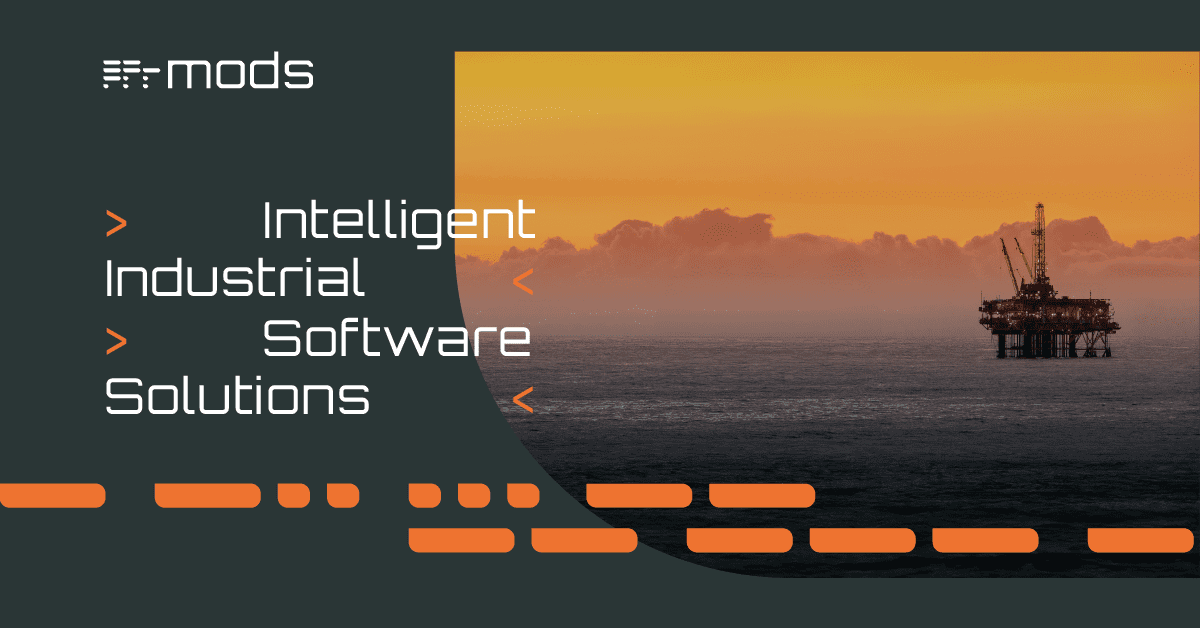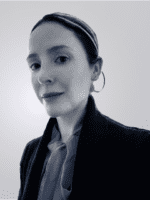Advanced Work Packaging (AWP) has revolutionized capital-project construction efficiency by optimizing work processes and enhancing productivity with constraint management. While historically associated exclusively with large-scale greenfield projects, however, AWP principles are equally transformative when applied to the arguably more challenging, data-poor brownfield sphere.
Characterized by complexity and ongoing operational environments, portfolios of brownfield projects stand to benefit hugely from successful AWP implementation with increased productivity, cost reduction and streamlined execution. For AWP to be successful in a historically difficult-to-manage contexts, it requires the right digital tools and a robust change management approach.
Understanding AWP in the Brownfield Context
AWP is a structured approach to construction execution covering initial planning through project completion. It decomposes project work into manageable packages to guide the construction process, ensuring all necessary resources, information and materials are available when needed.
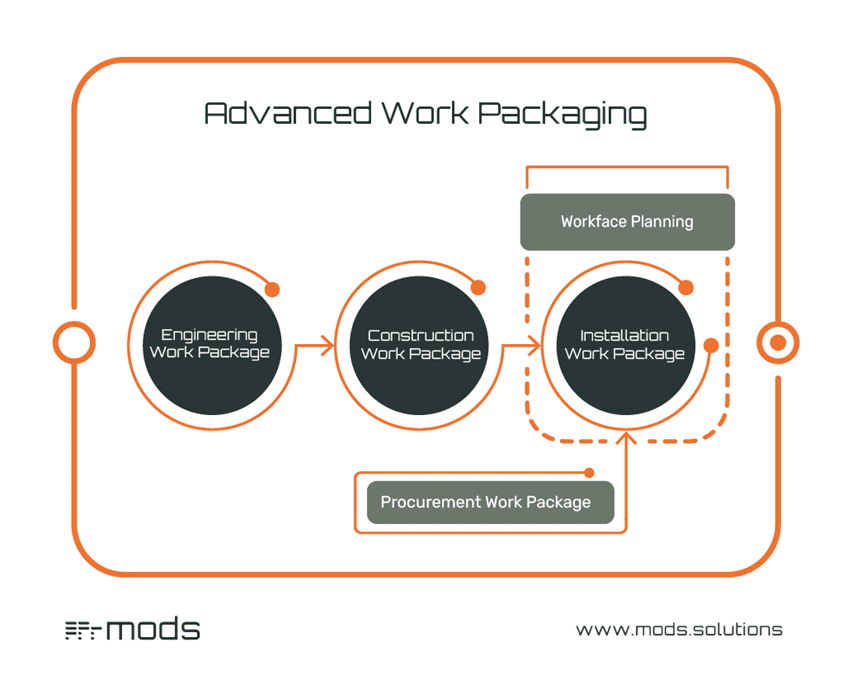 AWP generates huge amounts of data to enable an informed finish-to-start sequencing for constraint-free execution.
AWP generates huge amounts of data to enable an informed finish-to-start sequencing for constraint-free execution.
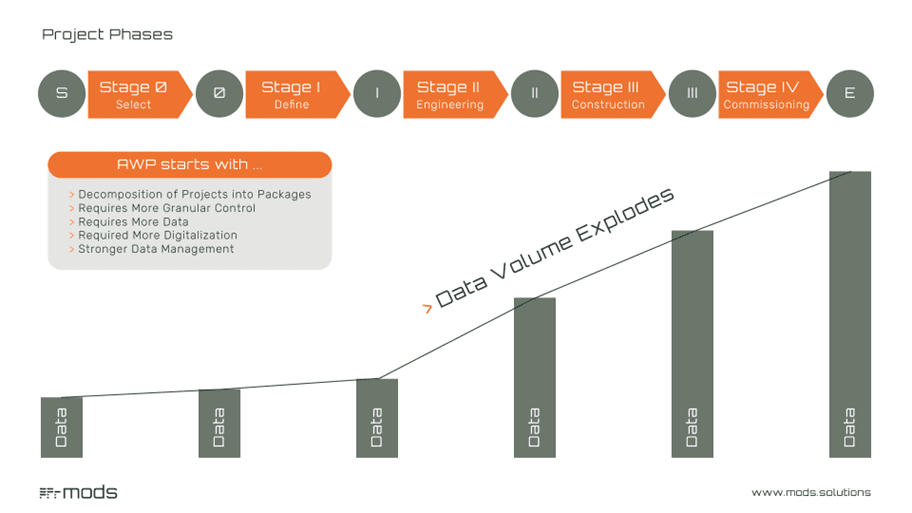 Brownfield projects, unlike their greenfield counterparts, involve modifications and upgrades to existing facilities with ongoing operations. These projects face unique challenges such as inaccessible information, constrained workspaces, working within ongoing operations, ensuing minimal disruption and the need to integrate new work with old. These complexities demand a high level of planning and coordination, which AWP excels at providing through the generation and management of data for informed decision-making throughout the project.
Brownfield projects, unlike their greenfield counterparts, involve modifications and upgrades to existing facilities with ongoing operations. These projects face unique challenges such as inaccessible information, constrained workspaces, working within ongoing operations, ensuing minimal disruption and the need to integrate new work with old. These complexities demand a high level of planning and coordination, which AWP excels at providing through the generation and management of data for informed decision-making throughout the project.
The role of software in AWP implementation
AWP generates a lot of data, which requires software so that it is stored, managed and used optimally. MODS Connect is a user-friendly accessible tool that brings AWP into brownfield projects whether grandfathered-in data exists or not. When applied across a portfolio of brownfield projects, identifying and proactively correcting for inefficiencies, AWP-supporting software such as MODS Connect helps with:
- Comprehensive data management to ensure large volumes of detailed, accurate data is organized and readily accessible.
- Improved visibility and communication to ensure that everyone has the same up-to-date information, reducing misunderstandings and improving coordination.
- Enhanced planning and sequencing for improved resource allocation and reduced downtime.
- Constraint management to ensure all necessary prerequisites are addressed before work begins.
- Progress tracking to sustain project momentum and address issues promptly and proactively by enabling evidence-based decision making.
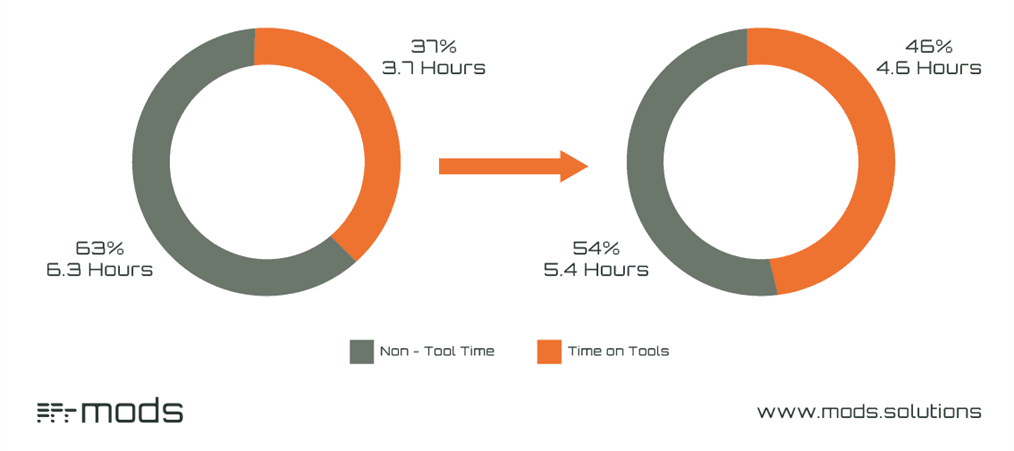 The payback of AWP in brownfield projects with properly managed change
The payback of AWP in brownfield projects with properly managed change
This upfront injection of resources and tools to onboard AWP methodology (i.e. begin-with-end-in-mind) and has a significant return on investment (ROI) for brownfield projects when the change is managed proactively. Studies have shown that using AWP can increase construction productivity by 8% and overall project productivity by up to 22%. For a portfolio of brownfield projects, these improvements translate into significant cost savings, shorter project timelines with fewer disruptions and delays and a more uniform, consistent approach to brownfield.
To realize these benefits, software tools such as MODS Connect are essential. But, especially in the brownfield space where digital maturity remains below industry benchmarks, it would be erroneous to focus exclusively on the new software over the human element. Change management is the complementary flipside to successfully onboarding any new software.
One goal-oriented change management model that can help guide individuals and organizations is the five-stage ADKAR model. The five ADKAR stages provide a useful framework for ensuring successful digital transformation and are as follows:
- Awareness: Ensuring that all stakeholders understand the need for change.
- Desire: Fostering a willingness to support and participate in the change.
- Knowledge: Providing information and training on how to change.
- Ability: Ensuring individuals have the skills and capabilities to implement the change.
- Reinforcement: Sustaining the change through continued support and resources.
 A case study in OnePetro presented at ADIPEC 2023 highlighted the application of the ADKAR model in onboarding MODS Connect to introduce AWP across 28 brownfield project sites in the UKCS, with the following findings:
A case study in OnePetro presented at ADIPEC 2023 highlighted the application of the ADKAR model in onboarding MODS Connect to introduce AWP across 28 brownfield project sites in the UKCS, with the following findings:
- Human-centric approach: Focusing on the human element results in higher levels of digital adoption and engagement among the workforce.
- Improved coordination: The structured implementation of the ADKAR model improved coordination and communication, leading to fewer errors and delays.
- Higher ROI: The change management approach led to a greater return on investment from the digital transformation program.
The Digital Imperative: Why MODS Connect?
To implement AWP in brownfield projects, digitalizing workflows is a must. MODS Connect software is a prime example of how technology can facilitate the successful implementation of AWP in these environments by digitalizing workflows such as work packages, materials management and completions.
Implementing AWP on brownfield projects need not be complicated, but it demands the ability to manage complex data, improve communication and ensure constraint-free execution. By leveraging the capabilities of the right software with a structured change management approach such as the ADKAR model, new levels of productivity and efficiency in-line with AWP methodology ensure that brownfield projects are completed successfully and profitably.
By addressing both technological and human elements, organizations can overcome adoption barriers, ensuring that digital transformation efforts deliver their full potential. MODS Connect stands at the forefront of this transformation, providing the digital backbone needed to bring AWP’s benefits to the brownfield sphere. MODS also offer digital consultancy services to help clients identify where and how to enter into brownfield digital transformation with AWP toward improved project outcomes.
As you explore the transformative power of AWP in brownfield projects, don’t miss the chance to see these principles in action. Register for our AWP Webinar to gain practical insights and expert guidance.
Lisa De Vellis is a Professional Engineer and Chartered Water and Environmental Manager with 20+ years of experience in a variety of engineering and global contexts. She writes about digitalization, engineering, and sustainability for MODS and other entities.

